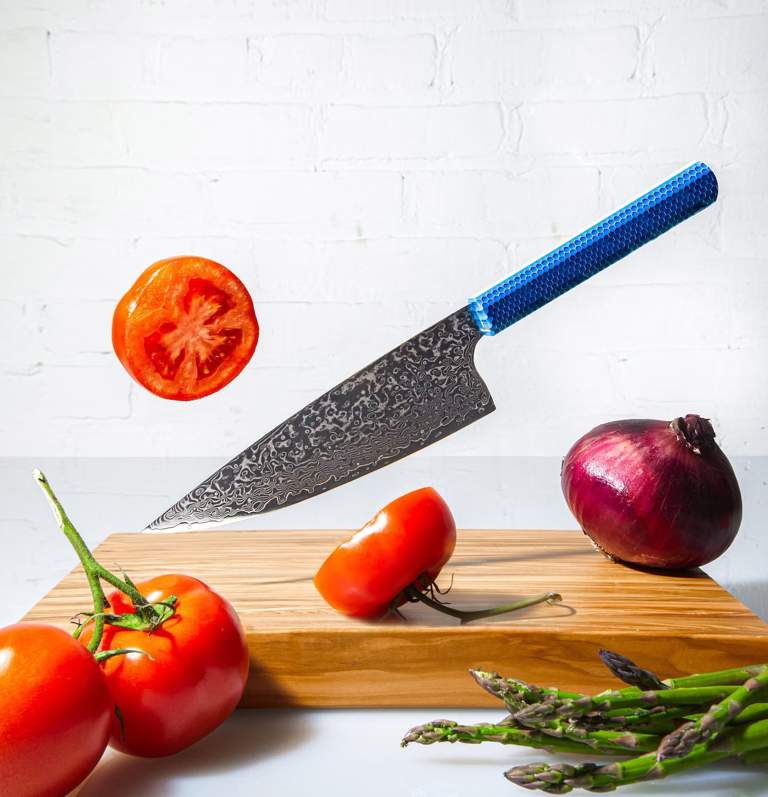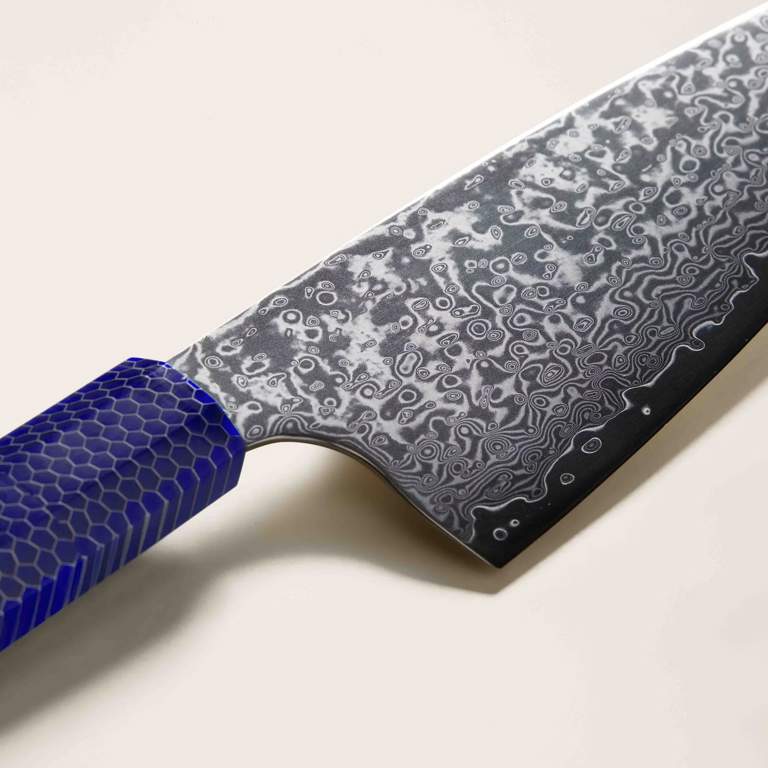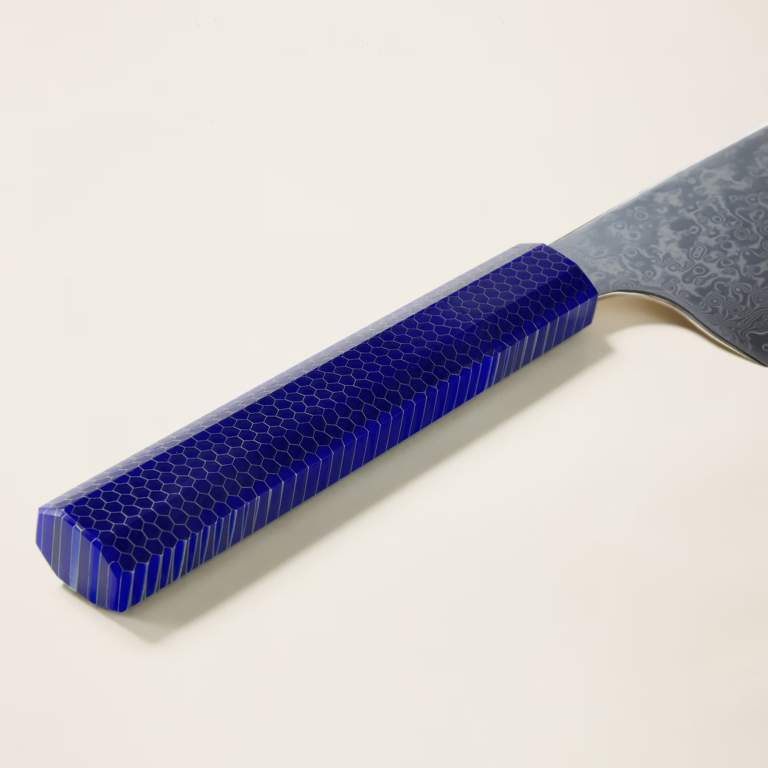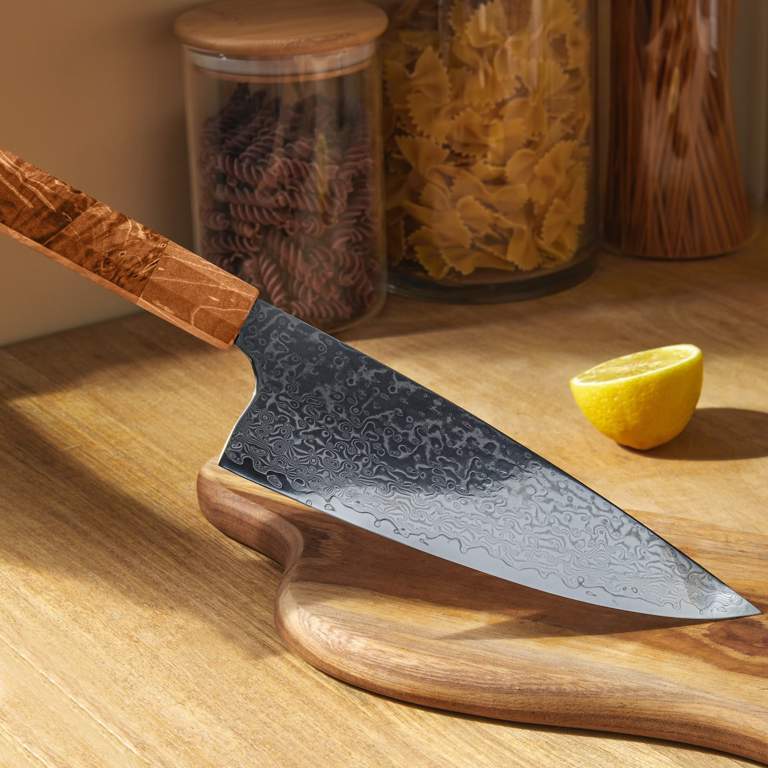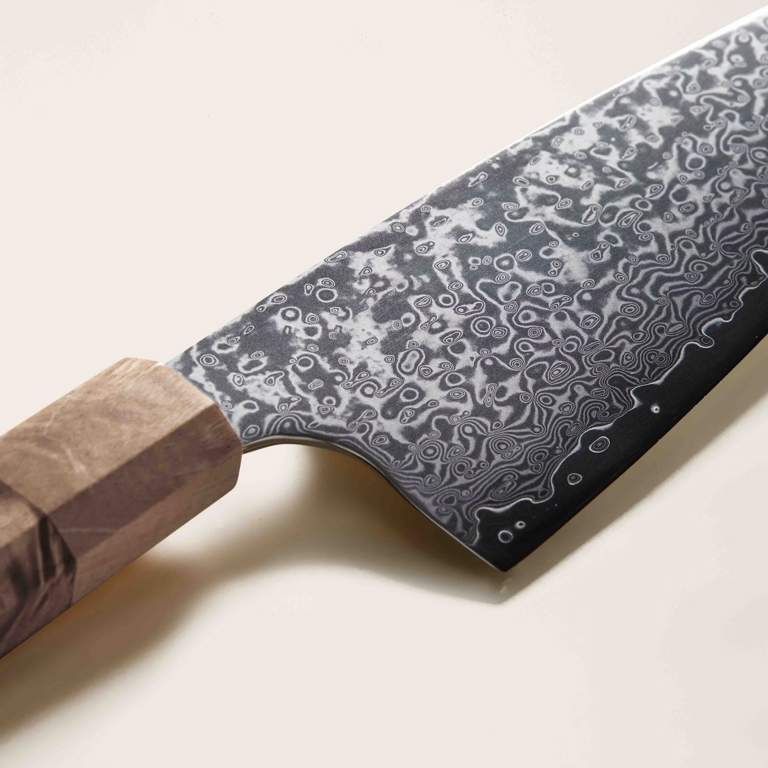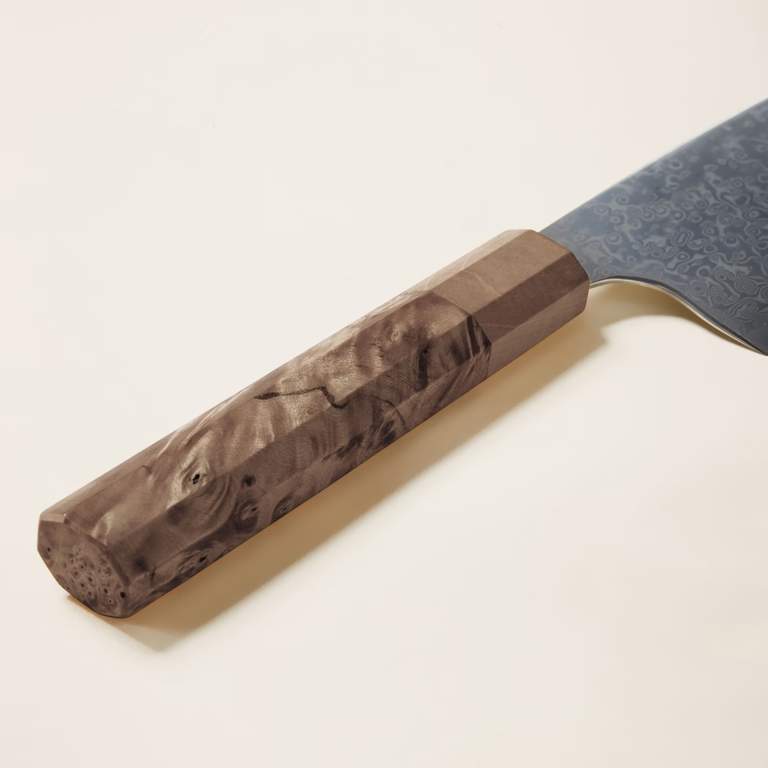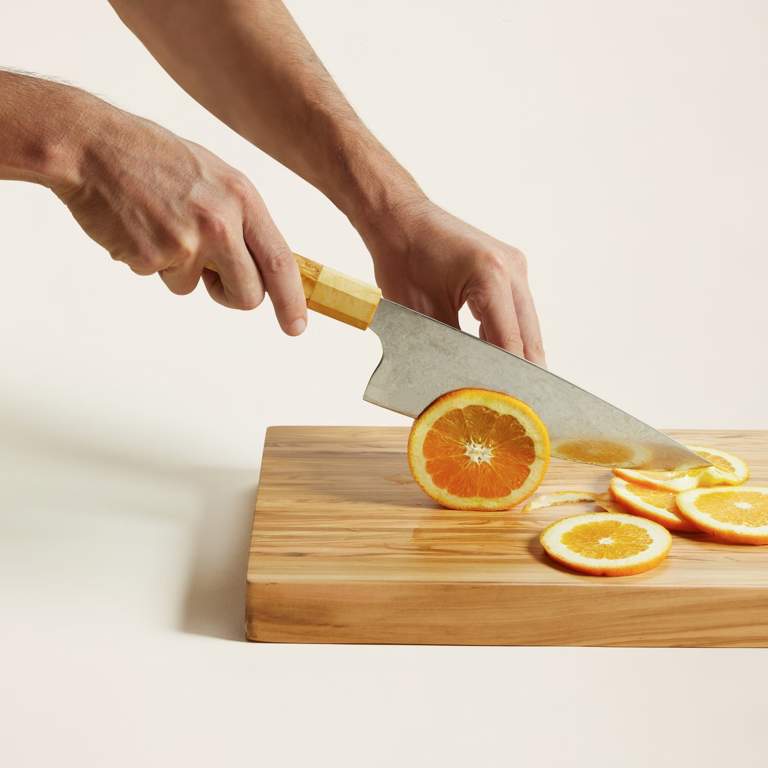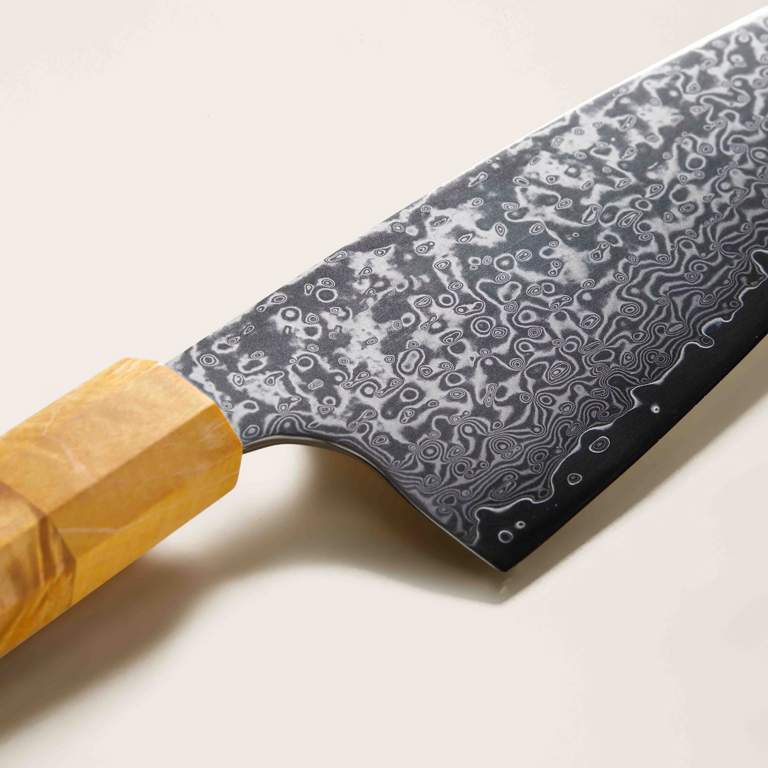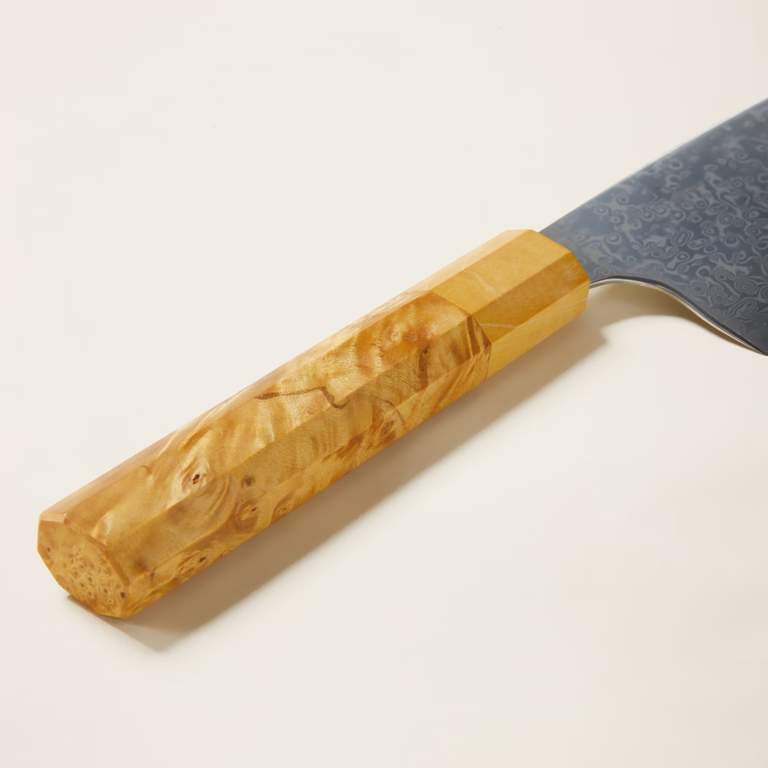Bestsellers for Japanese Knives
Crafting comfort and control is crucial when it comes to Japanese knife handles. These handles play a significant role in the performance of chefs as they affect comfort and control during use. There are various traditional Japanese knife handle styles, each with unique features and benefits. Modern innovations have brought advancements in materials, ergonomics, and grip technology for knife handle design. When choosing a handle material, it is important to consider factors such as pros, cons, and personal preferences. Customization options allow for a personalized touch to your knife handle. Maintaining and caring for knife handles is important to preserve their quality, and avoiding common mistakes is key. Italic is committed to quality and craftsmanship in Japanese knife handle design, offering a collection that showcases their dedication.

on Italic.com
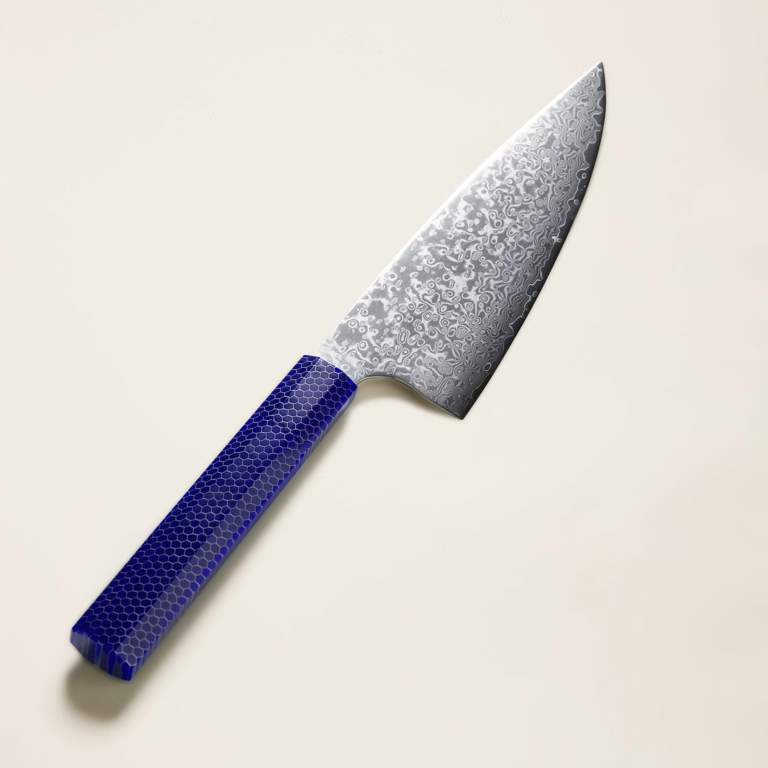
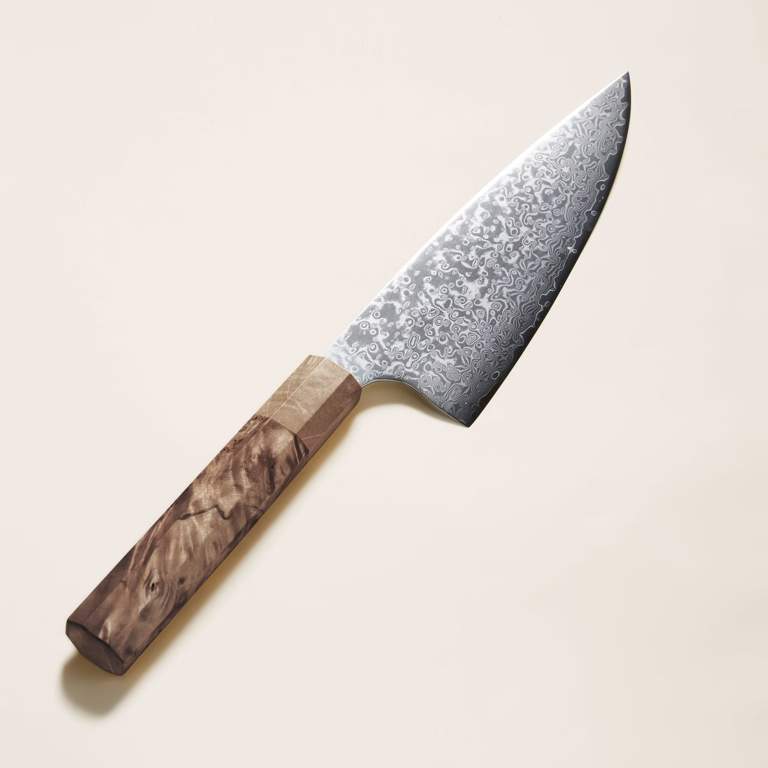
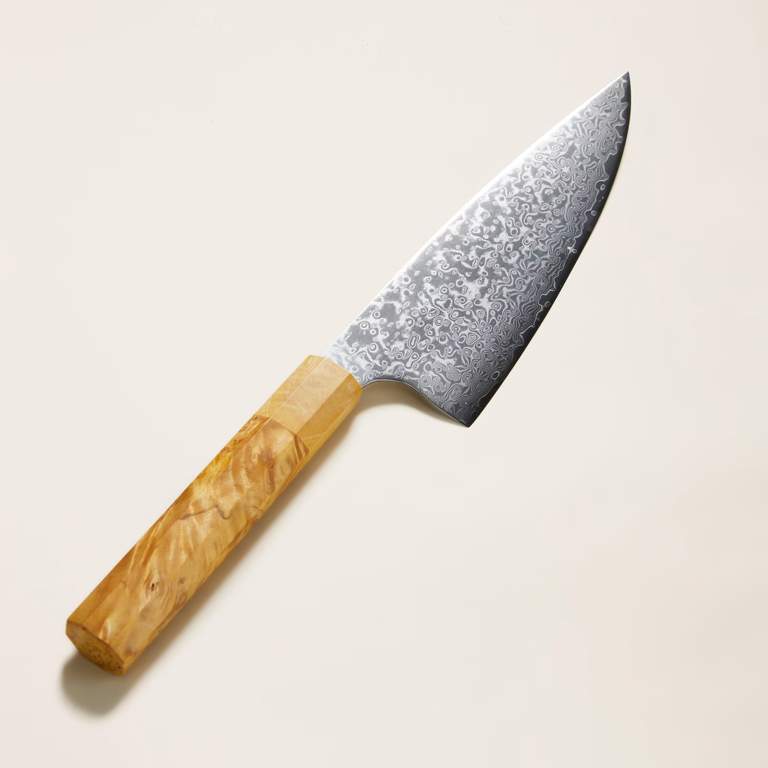
The Importance of Knife Handles
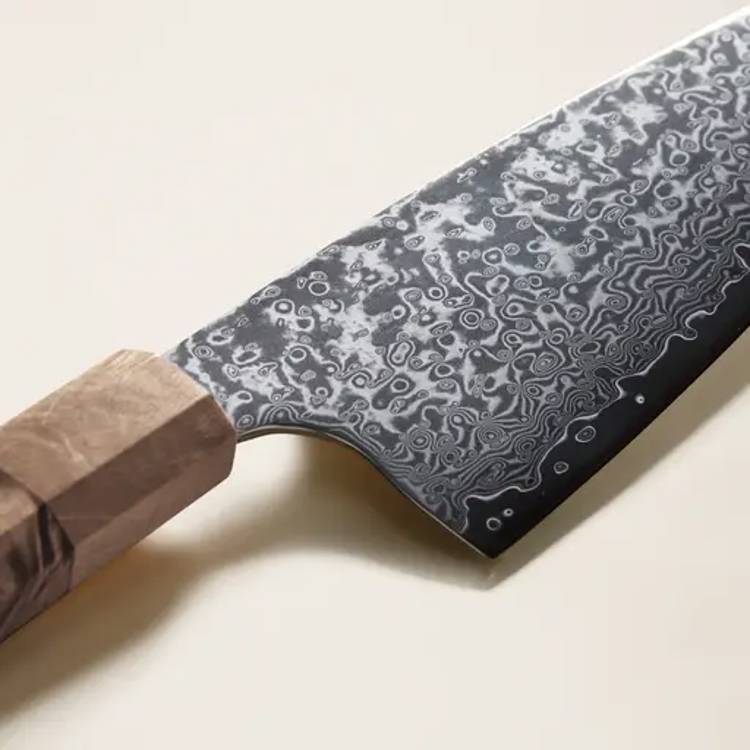
When it comes to kitchen knives, the importance of the handle cannot be overstated. The handle is not just a decorative element; it plays a crucial role in providing comfort and control during use, especially for professional chefs who rely on their knives for precision and efficiency.
A well-designed knife handle should feel comfortable in the hand, allowing for a secure grip and reducing the risk of slippage. This is particularly important when working with sharp blades that require precise movements. A comfortable handle can help reduce hand fatigue and improve overall performance in the kitchen.
In addition to comfort, the right knife handle also contributes to control. The handle should provide a balanced feel, allowing for easy maneuverability and control over the blade. This is especially important when performing delicate tasks such as slicing or chopping ingredients with precision.
Different individuals may have different preferences when it comes to knife handles. Some may prefer a handle with a larger grip for better control, while others may prefer a slimmer design for more agility. It's important to choose a knife handle that feels comfortable and natural in your hand, as this will ultimately enhance your cooking experience.
When selecting a knife handle, it's also important to consider factors such as durability and maintenance. Handles made from high-quality materials like wood or composite materials are often more durable and resistant to wear and tear. Additionally, certain materials may require specific care instructions to maintain their appearance and functionality over time.
At Italic, we understand the importance of knife handles in providing a superior cooking experience. That's why we offer a collection of Japanese knife handles that are crafted with precision and attention to detail. Our handles are designed to provide both comfort and control, allowing you to elevate your culinary skills with confidence.
Whether you prefer traditional Japanese knife handles or modern innovations in design, Italic has a range of options to suit your preferences. Explore our collection and discover the perfect knife handle that will enhance your cooking experience and bring joy to your time in the kitchen.
Traditional Japanese Knife Handles
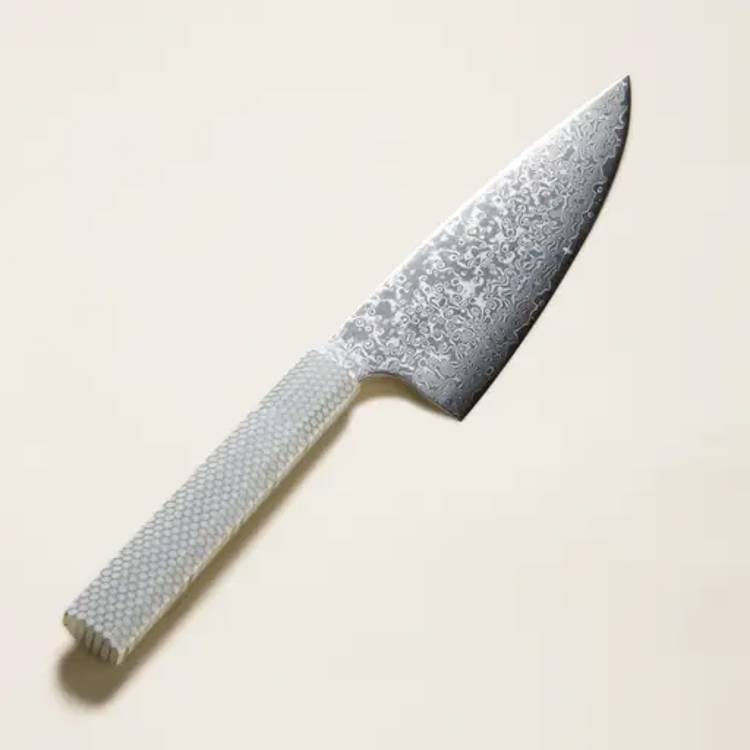
Traditional Japanese knife handles are known for their craftsmanship and attention to detail. They are designed to provide comfort and control during use, allowing chefs to perform at their best.
Overview of different types of traditional Japanese knife handles
- Wa Handle: Wa handles, also known as Japanese-style handles, are made from various types of wood. They are typically octagonal or D-shaped, providing a comfortable grip. The natural wood material offers a warm and traditional aesthetic.
Yo Handle: Yo handles, also known as Western-style handles, are influenced by Western knife designs. They often feature a full tang construction, with the handle made from materials like wood, plastic, or composite. Yo handles offer a familiar grip for those accustomed to Western knives.
Horn Handle: Horn handles are made from animal horn, typically buffalo horn. They are highly durable and provide excellent grip even when wet. Horn handles are often used in traditional Japanese knives for their aesthetic appeal and natural feel.
Magnetic Handle: Magnetic handles are a unique type of handle that uses magnets to securely hold the knife in place. This allows for easy storage and accessibility in the kitchen. Magnetic handles are often used in professional kitchens for their convenience.
Unique features and benefits of each style
Wa handles offer a traditional and authentic Japanese aesthetic. They provide a comfortable grip and allow for precise control during cutting tasks.
Yo handles provide a familiar grip for those who prefer Western-style knives. They often have ergonomic designs that reduce hand fatigue during extended use.
Horn handles offer a unique look and feel, with excellent grip even in wet conditions. They add a touch of elegance to traditional Japanese knives.
Magnetic handles provide a convenient storage solution, keeping the knife easily accessible while also protecting the blade.
When choosing a traditional Japanese knife handle, consider your personal preferences in terms of grip, aesthetics, and functionality. Each style has its own unique features and benefits that can enhance your culinary experience.
Note: The information provided here is a general overview of traditional Japanese knife handles. Italic's collection of Japanese knife handles may have additional variations and styles to explore.
Modern Innovations in Knife Handle Design
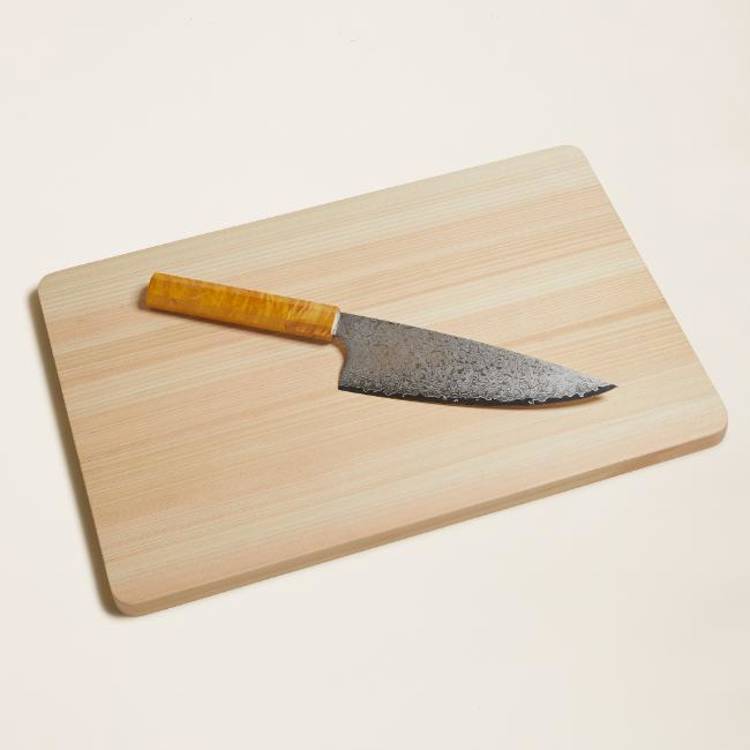
Knife handle design has come a long way, with modern innovations focusing on enhancing comfort and control during use. These advancements have revolutionized the way chefs and home cooks experience their knives.
Contemporary materials and techniques used in crafting knife handles
Modern knife handles are crafted using a variety of materials, each with its own unique properties. Some popular materials include:
G10: G10 is a high-pressure fiberglass laminate that is lightweight, durable, and resistant to moisture and chemicals. It offers excellent grip and is often used in professional-grade knives.
Micarta: Micarta is another type of composite material made from layers of fabric or paper impregnated with resin. It is known for its strength, stability, and resistance to moisture.
Carbon Fiber: Carbon fiber handles are incredibly lightweight yet strong. They offer excellent grip and are often used in high-end knives.
Titanium: Titanium handles are lightweight, corrosion-resistant, and have a unique aesthetic appeal. They are known for their durability and can be an excellent choice for those looking for a modern and sleek design.
Resin: Resin handles can be customized with various colors and patterns, making them highly versatile in terms of design. They are also durable and easy to clean.
In addition to these materials, modern knife handle designs often incorporate ergonomic shapes and textures to improve grip and reduce fatigue during prolonged use. Contoured handles with finger grooves or textured surfaces provide a secure grip, allowing for precise control over the knife.
Advancements in ergonomics and grip technology
Ergonomics play a crucial role in modern knife handle design. Handles are now shaped to fit comfortably in the hand, reducing strain and fatigue during use. The contours of the handle are carefully designed to provide a natural grip that promotes proper hand positioning and control.
Grip technology has also seen significant advancements. Some knife handles feature textured or rubberized surfaces that provide enhanced grip, even when wet. This is particularly important in professional kitchens where the pace can be fast and accidents can happen.
Choosing the right handle material
When selecting a knife handle, it's essential to consider factors such as durability, grip, and personal preference. Some materials may require more maintenance than others, while others may offer specific benefits such as moisture resistance or lightweight construction.
It's also important to choose a handle material that complements the overall aesthetic of the knife and aligns with your personal style and preferences.
Customizing your knife handle
Many knife enthusiasts enjoy customizing their knife handles to make them unique and personalized. Some common customization options include adding decorative elements like engravings or inlays, changing the shape or size of the handle, or even creating a custom handle from scratch using different materials.
However, it's important to note that modifying a knife handle can affect its balance and performance, so it's crucial to consult with a professional or experienced knife maker before making any modifications.
Italic's Japanese Knife Handles
At Italic, we understand the importance of quality and craftsmanship in knife handle design. Our collection of Japanese knife handles showcases modern innovations while staying true to traditional Japanese aesthetics.
Each handle is carefully crafted using high-quality materials that offer durability, comfort, and control. Whether you prefer a G10 handle for its lightweight and grip or a carbon fiber handle for its sleek design, our collection has something for everyone.
By incorporating modern innovations in knife handle design, Italic aims to provide chefs and home cooks with the tools they need to elevate their culinary experience.
Choosing the Right Handle Material
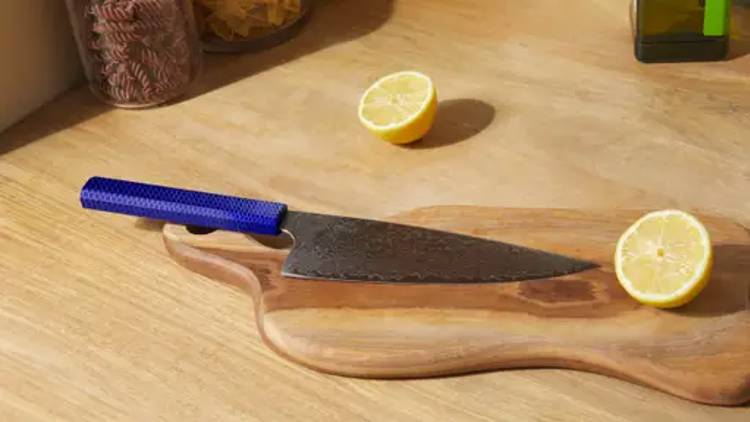
When selecting a Japanese knife, one important factor to consider is the handle material. The handle not only affects the overall aesthetics of the knife but also plays a crucial role in comfort and control during use. Here are some popular handle materials to consider:
Wood: Wood handles are a traditional choice for Japanese knives. They offer a natural and warm feel, providing a comfortable grip. Different types of wood, such as ebony or rosewood, can be used to create unique and beautiful handles. However, wood handles require regular maintenance to prevent drying out or warping.
Plastic: Plastic handles are lightweight and easy to clean, making them a popular choice for professional chefs. They are often made from durable materials like polypropylene or fiberglass-reinforced nylon. Plastic handles are also resistant to moisture and can withstand high temperatures. However, they may not offer the same level of elegance as other materials.
Composite: Composite handles combine different materials to provide the benefits of each. For example, a composite handle may have a wood core for aesthetics and a plastic or resin outer layer for durability and moisture resistance. These handles offer the best of both worlds, combining the natural beauty of wood with the practicality of plastic.
When choosing a handle material, consider factors such as your personal preferences, the intended use of the knife, and your maintenance capabilities. It's also important to ensure that the handle is securely attached to the blade for safety and longevity.
At Italic, we understand the importance of quality craftsmanship in knife handle design. Our collection of Japanese knives features carefully selected handle materials that not only enhance the overall aesthetics but also provide comfort and control during use. Whether you prefer the traditional warmth of wood or the practicality of plastic, we have options to suit your needs.
By choosing the right handle material for your Japanese knife, you can ensure a comfortable and enjoyable cooking experience while adding a touch of luxury to your kitchen.
Customizing Your Knife Handle
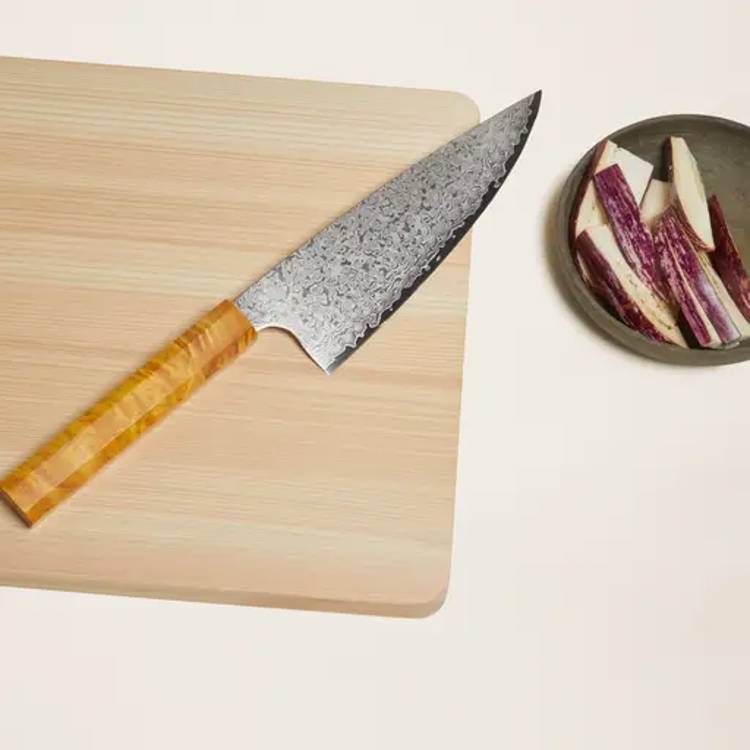
Customizing your knife handle can be a fun and creative way to personalize your kitchen tools. While many knife handles come in standard designs and materials, there are several options for customizing and adding your own personal touch.
Handle Materials
One way to customize your knife handle is by choosing a unique handle material. While traditional knife handles are often made from wood, there are now many alternative materials available. Some popular options include:
Resin: Resin handles can come in a variety of colors and patterns, allowing you to create a truly unique look for your knife.
Stabilized Wood: Stabilized wood is wood that has been treated with resin or other stabilizing agents to enhance its durability and appearance. This can give your knife handle a beautiful and distinctive look.
Maple Burl: Maple burl is a type of wood known for its intricate grain patterns. Choosing a knife handle made from maple burl can add a touch of natural beauty to your kitchen tools.
Handle Shapes and Designs
In addition to choosing a unique handle material, you can also customize the shape and design of your knife handle. Some options to consider include:
Contoured Handles: Contoured handles are designed to fit comfortably in your hand, providing ergonomic support and reducing fatigue during use.
Textured Handles: Textured handles can provide extra grip and control, making it easier to handle your knife, especially when working with wet or slippery ingredients.
Engravings or Personalization: If you want to add a personal touch to your knife handle, consider getting it engraved with your initials or a special design.
DIY Handle Customization Techniques
If you're feeling particularly crafty, you can even try customizing your knife handle yourself. Here are some DIY techniques you can explore:
Wood Burning: Wood burning allows you to create intricate designs or patterns on a wooden handle using a heated tool. This can add a unique and personalized touch to your knife.
Dyeing or Staining: If you have a light-colored handle, you can experiment with dyeing or staining it to achieve different colors or finishes. This can be a fun way to create a one-of-a-kind look for your knife.
Handle Wraps: Another option is to wrap your knife handle with materials like paracord or leather. This not only adds a decorative element but also provides extra grip and comfort.
Remember, when customizing your knife handle, it's important to consider the impact on the overall functionality and safety of the knife. Make sure any modifications you make do not compromise the integrity of the handle or affect the balance and performance of the knife.
By customizing your knife handle, you can create a kitchen tool that reflects your personal style and enhances your cooking experience. Whether you choose a unique handle material, explore different shapes and designs, or try your hand at DIY customization techniques, the possibilities are endless.
Maintaining and Caring for Knife Handles
Proper maintenance and care of knife handles are essential for preserving their quality and ensuring their longevity. Here are some tips to help you keep your knife handles in excellent condition:
Cleaning: Regularly clean your knife handles to remove any dirt, grime, or food residue. Use a mild dish soap and warm water to gently scrub the handles with a soft cloth or sponge. Avoid using abrasive cleaners or scrub brushes that can damage the handle material.
Drying: After cleaning, make sure to thoroughly dry the knife handles to prevent moisture buildup. Use a clean towel or allow them to air dry completely before storing them.
Avoid Excessive Moisture: Avoid soaking knife handles in water or exposing them to excessive moisture for extended periods. Prolonged exposure to moisture can cause damage to certain handle materials, such as wood or natural materials.
Avoid Harsh Chemicals: Avoid using harsh chemicals, bleach, or abrasive cleaning agents on your knife handles. These can strip away the finish or damage the handle material.
Handle Material-Specific Care: Different handle materials require specific care. For example, wooden handles may benefit from occasional oiling with food-safe mineral oil to maintain their luster and prevent drying out. Plastic or composite handles can be wiped down with a damp cloth.
Storage: Proper storage is crucial for maintaining the quality of knife handles. Store your knives in a knife block, sheath, or on a magnetic strip to protect the handles from unnecessary wear and tear.
Avoid Extreme Temperatures: Avoid exposing your knife handles to extreme temperatures, such as direct sunlight or extreme heat sources like stovetops or ovens. Extreme temperatures can cause warping or cracking of certain handle materials.
Regular Inspections: Regularly inspect your knife handles for any signs of damage, such as cracks, chips, or loose fittings. Address any issues promptly to prevent further damage and ensure safe use.
By following these maintenance and care tips, you can extend the lifespan of your knife handles and continue to enjoy their comfort and functionality for years to come.
Note: Italic takes pride in the quality and craftsmanship of its Japanese knife handles. For specific care instructions or recommendations, refer to the product documentation provided by Italic.
Italic's Japanese Knife Handles
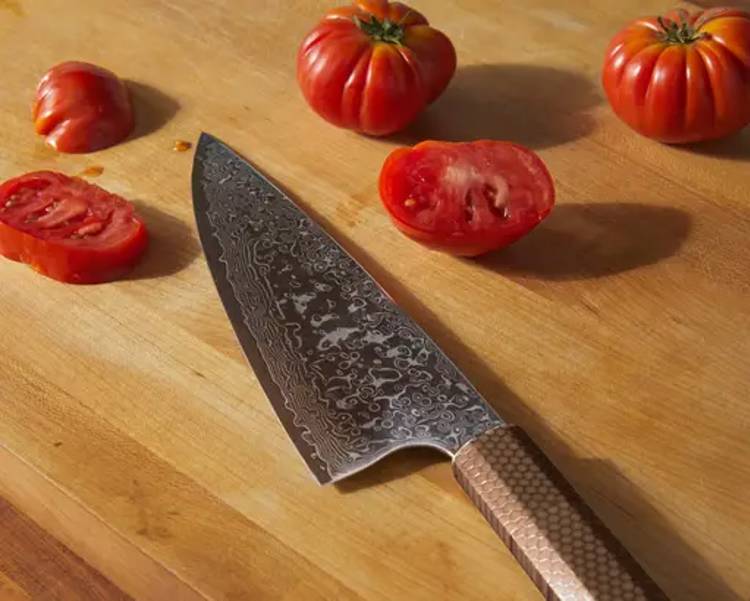
Italic's Japanese Knife Handles are crafted with a focus on comfort and control, ensuring an exceptional culinary experience. These handles are designed to enhance the performance of chefs and home cooks alike.
The Importance of Knife Handles
The handle of a knife plays a crucial role in providing comfort and control during use. It is the point of contact between the user and the blade, and a well-designed handle can make a significant difference in the overall cooking experience. A comfortable grip allows for precise cutting, reduces hand fatigue, and enhances safety in the kitchen.
Traditional Japanese Knife Handles
Italic offers a range of traditional Japanese knife handles, each with its own unique features and benefits. These handles are crafted using time-honored techniques and materials that have been used for centuries in Japanese knife making.
Kumo Japanese VG10 Gyuto Chef Knife - Blue Honeycomb Resin: This handle features a beautiful blue honeycomb resin design that not only adds visual appeal but also provides a secure grip.
Kumo Japanese VG10 Gyuto Chef Knife - Natural Birch Burl: The natural birch burl handle showcases the beauty of wood grain while offering excellent durability and comfort.
Kumo Japanese VG10 Gyuto Chef Knife - Brown Stabilized Maple: The brown stabilized maple handle combines elegance with stability, making it a perfect choice for those seeking both style and functionality.
Modern Innovations in Knife Handle Design
Italic also incorporates modern innovations in its knife handle designs. These advancements include the use of contemporary materials and techniques that enhance ergonomics and grip technology. The result is a knife handle that fits comfortably in the hand and provides optimal control.
Choosing the Right Handle Material
When selecting a knife handle, it's essential to consider the pros and cons of different materials. Italic offers handles made from various materials such as wood, plastic, and composite. Each material has its own unique characteristics, including durability, aesthetics, and maintenance requirements. It's important to choose a handle material that suits your preferences and cooking style.
Customizing Your Knife Handle
Italic understands that personalization is important to many customers. That's why they offer options for customizing your knife handle. Whether it's engraving your initials or adding a unique design, you can make your knife handle truly one-of-a-kind. Additionally, there are DIY handle customization techniques available for those who prefer a hands-on approach.
Maintaining and Caring for Knife Handles
To ensure the longevity of your knife handle, proper maintenance and care are essential. Italic provides tips for cleaning and preserving the quality of their knife handles. By following these guidelines, you can keep your handles looking and feeling their best for years to come.
Italic's Japanese Knife Handles
Italic is committed to quality and craftsmanship in its knife handle designs. Their collection of Japanese knife handles showcases the brand's dedication to providing exceptional products that meet the highest standards. With Italic's Japanese Knife Handles, you can elevate your culinary experience and enjoy the perfect balance of comfort and control in the kitchen.
Italic Buying Guide

Japanese knives are the epitome of precision and craftsmanship. With their razor-sharp blades and ergonomic designs, these knives offer unparalleled cutting performance. When choosing a Japanese knife, there are several factors to consider.
First and foremost, blade material is crucial. Japanese knives are typically made from high-quality stainless steel, such as VG10. This type of steel offers excellent edge retention and corrosion resistance. Additionally, consider the layer count of the blade. More layers generally indicate better strength and durability.
Next, consider the blade length. Japanese knives come in various sizes, ranging from small utility knives to larger chef's knives. The right blade length depends on your personal preference and the tasks you frequently perform in the kitchen.
Another important factor to consider is the handle. Japanese knives often feature unique hexagonal handles that provide a comfortable grip and excellent control. Look for a handle material that suits your preferences, whether it's wood, resin, or another material.
Lastly, consider the brand reputation and customer reviews. Japanese knife brands with a long history and positive feedback from customers are more likely to produce high-quality knives.
In conclusion, when purchasing a Japanese knife, prioritize blade material, layer count, blade length, handle design, and brand reputation. By considering these factors, you can find the perfect Japanese knife that will enhance your culinary skills and bring joy to your cooking experience. Here are some products we recommend.
Kumo Japanese VG10 Gyuto Chef Knife - Blue Honeycomb Resin
The Kumo Japanese VG10 Gyuto Chef Knife is a pinnacle of modern steel, crafted from 67 layers of pure Damascus Japanese VG10 stainless steel for superior edge retention and corrosion resistance. Its 61 HRC score ensures the knife can be used for a long time without needing to be sharpened. Its curved blade provides universal utility and its part of the limited Kumo collection which features handcrafted knives with cutting boards crafted from medium-hard Japanese Hinoki Cypress, making it the perfect combination of form and function.
- Superior quality material - The Kumo Japanese VG10 Gyuto Chef Knife is made from high-grade VG10 Japanese steel, which is known for its exceptional durability and sharpness.
- Elegant design - The knife features a unique blue honeycomb resin handle, which adds elegance and sophistication to any kitchen.
- Versatility - This Gyuto Chef Knife is perfect for slicing, dicing, and chopping a wide variety of foods, making it a versatile addition to any kitchen.
- Comfortable grip - Many users have praised the comfortable grip offered by the knife's specially designed handle, allowing for precise and effortless cutting.
- Long-lasting sharpness - The VG10 steel ensures that the knife retains its sharpness for an extended period, reducing the need for frequent sharpening.
- Easy maintenance - Users have mentioned that the knife is easy to clean and maintain, making it a practical choice for everyday use.
- Great value for money - Despite its premium features and quality construction, the Kumo Japanese VG10 Gyuto Chef Knife is reasonably priced, offering great value for money.
Kumo Japanese VG10 Gyuto Chef Knife - Brown Stabilized Maple
The Kumo Japanese VG10 Gyuto Chef Knife is a unique and luxurious piece of kitchenware, featuring handcrafted Damascus steel for superior edge retention, corrosion resistance, and durability. Its 61 HRC score makes it perfect for long-lasting use and its universal utility means it can easily slice, chop, and dice any ingredients you need. Finally, this chef's knife is part of the exclusive Kumo Collection which combines both beauty and function.
- Sharpness: Many users rave about the remarkable sharpness of the Kumo Japanese VG10 Gyuto Chef Knife, allowing for precise and effortless cuts.
- Quality Material: The knife is made from VG10 Japanese steel, which is praised for its durability, rust resistance, and edge retention.
- Handle Comfort: The Brown Stabilized Maple handle provides a comfortable grip, enhancing control and minimizing hand fatigue during prolonged use.
- Versatility: This knife is highly versatile, capable of handling a wide range of kitchen tasks from chopping vegetables to slicing meat.
- Aesthetics: Users often compliment the beautiful design of the knife. Its unique pattern and elegant brown stabilized maple handle make it a stylish addition to any kitchen.
- Balance: The knife has excellent balance, making it easy to control and aiding in precision cutting.
- Value for Money: Despite its high-end features, the Kumo Japanese VG10 Gyuto Chef Knife is considered great value for money by many users.
Kumo Japanese VG10 Gyuto Chef Knife - Natural Birch Burl
The Kumo Japanese VG10 Gyuto Chef Knife is a pinnacle of modern steel, made with 67 layers of pure Damascus Japanese VG10 stainless steel for superior edge retention and corrosion resistance. It features a Rockwell Rating of 61 HRC and universal utility, making it ideal for cutting any vegetables, meats, or breads. It is part of the Kumo Collection which includes handcrafted knives and cutting boards crafted from medium-hard Japanese Hinoki Cypress.
- Exceptional Sharpness: Many reviews rave about the Kumo Japanese VG10 Gyuto Chef Knife's superior sharpness. The VG10 steel provides an exceptionally sharp edge that cuts through food effortlessly.
- High-Quality Material: The knife is made from VG10 steel, a high-quality stainless steel that is rust-resistant, durable, and maintains its sharpness for longer periods of time.
- Comfortable Grip: Users appreciate the comfortable grip of the knife. The handle, made from natural birch burl, is not only aesthetically pleasing but also ergonomic and easy to hold.
- Versatility: This chef knife is praised for its versatility. It's perfect for a wide range of kitchen tasks, from slicing and dicing vegetables to cutting meat.
- Beautiful Design: Many users love the beautiful design of the Kumo Japanese VG10 Gyuto Chef Knife. The natural birch burl handle and polished steel blade give it a sleek, sophisticated look.
- Balanced Weight: Users note that this knife has a well-balanced weight, which makes it comfortable to use for long periods of cooking time.
- Excellent Value for Money: Despite its high-end materials and craftsmanship, users find this knife to be excellent value for money. Its performance rivals that of much more expensive kitchen knives.



